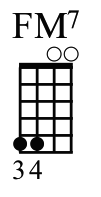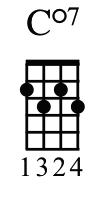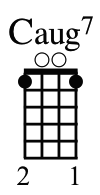What Makes a Good Chord?
When I’m analysing a chord progression I like to think of it in terms of a story. With each chord being a new mood and scene and pushing the story forward.
For example, play a simple chord progression like C – F – G7 – C.
The C chord is the family at home all safe and settled. The F chord moves somewhere unfamiliar with the kids wandering off into the woods and finding a gingerbread house.
Then the G7 chord is pivotal. It’s the part that has you on the edge of your seat waiting for what comes next. If you stop a progression on the G7 it’s ending the story, “Then the witch grabbed the annoying kid and marched him towards the oven. The End.” There’s a tension that you need to resolve.
That propels the progression back to C. Taking you back home where you can feel safe and settled.
A good chord is one that tells its part of the story. You can read a whole lot more about this in the book I wrote about chords. But here are my favourites. Let me know yours in the comments.
Dm
The saddest of all the chords. I don’t know why but it makes people weep instantly.
In a Progression
Dm – A7 – Dm – Gm – Dm – A7 – Dm – A7 – Dm
Some Songs that Use It
Karen O – The Moon Song
Amy Winehouse – Back to Black
Basia Bulat – Sparrow
Beirut – Gulag Orkestar
Bright Eyes – First Day of My Life
C (with an E on top)
C is the most common chord so it’s good to spice it up sometimes. For this inversion of the chord (which I’ll refer to as C/e) you just move your finger up from the 3rd fret to the 7th fret.
The high E gives it a bit of sweetness at the top end. And makes it sound less final than the usual C chord. So it’s a good place to start a chord progression which heads towards the final C.
In a Progression
Songs That Use It
Death Cab for Cutie – Talking Bird
Fmaj7
Fmaj7 gets overlooked a lot. Probably because it’s usually rendered in chord books as 2413 (presumably by either people who’ve never played the chord or shadow puppet masters). The vastly easier way of playing it is 5500.
I find Fmaj7 a very hard chord to pin down. It’s relaxed but it has a melancholy edge to it. It has the sweetness of a standard F chord. But it also has the tension between E and F notes. Hold down the chord and play the C and E strings together and you’ll hear how dissonant it is.
In a Progression
Fmaj7 – Gm7
Some Songs that Use It
Have Yourself a Merry Little Christmas
Caetano Veloso – O Leaozinho
Lightspeed Champion – Tell Me What It’s Worth
Cdim7
My favourite property of diminished chords is that all the chord inversions up the neck have the same shape. For example the Cdim7 (or Co7) has these inversions:
So all these chords have the same notes. Just in a different order. The notes on the first chord (going from the g-string to the A-string) are: A – Eb – F# – C. On the second chord it’s: C – F# – A – Eb. On the third: Eb – A – C – F#. And finally: F# – C – Eb – A.
Same notes, different order. Try this with any other chord shape and you’ll get completely different notes.
I regard it as the ‘girl tied to the train tracks’ chord. It’s a nervous chord. Full of peril.
In a Progression
Here I’m just playing the inversions of Cdim7 going up the neck in sequence.
Some Songs that Use It
Caug7
This is what I went with for my favourite chord. It’s just C7 with the G moved up one fret. You can also play it like this.
It has a double dose of tension with the 7th note and the raised fifth. If I play it I can’t get on with my day until I play an F chord afterwards. That makes it a great chord to add to the end of a progression to propel you back to the home chord.
In a Progression
Here’s an 8 bar blues with the Caug7 at the end moving you back to the start of the progression.
F – F7 – Bb – Bb7 – F – C7 – F – Caug7 – F
What’s Yours?
Let me know your favourite chord (or chords) in the comments. Especially if there’s one you think I’ve overlooked. I enjoyed putting this post together and might well do a follow up in future.









Nice post, Al. You and I think a lot alike. My favorite place in a progression is the IV. I do, however, also like a good I+5 at selected moments.